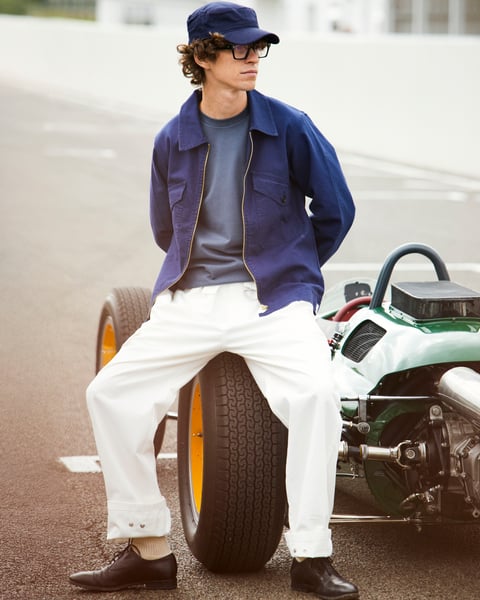Axon's Automotive Anorak: Cars that had wind issues
As Storm Doris lashed the United Kingdom late last week with winds up to 90mph in some areas, British transportation virtually ground to a halt in many regions, with roads and rail tracks blocked by fallen trees and debris, bridges closed and some high-sided trucks taking a tumble.

Driving extensively around the South East during Storm Doris last Thursday, I was very amused to see most of the gargantuan SUVs that usually hog the motorway outside lane, terrorising fellow motorists in their ‘regular’ saloons and sports cars, including me!
Suddenly, a few strong gusts of wind pushed their huge steeds around, and the often brazen drivers of these SUVs slowed down and drove like normal, sane and considerate human beings. If only they were that considerate the rest of the time…
Severe side winds in modern slab-sided SUVs can be a real issue causing safety risks and needing real driver concentration and sharp reactions. Regular cars are not totally immune though either.
When Ford bravely replaced its ultra-conservative Cortina with the bold-for-its-time Sierra in 1983, early buyers complained so much about the stability of this new family hatch model in side winds, Ford was forced to quickly react with a solution, before the new model gained a reputation for being dangerous to drive. Ford fitted a small, sculptured black plastic ‘aero foil’ behind the third side window, aft of the rear passenger door, to all five-door hatch Sierra models, right up to the time the model was replaced by the first Mondeo, thus curing the problem.

Mercedes-Benz suffered a similar problem with its first-generation A-Class – in addition to famously failing the Swedish swerve ‘moose test’ – and fellow Germans Audi also faced cross wind stability issues with the original TT coupe, forcing the standard fitment of a rear boot spoiler, which was initially only planned as an extra-cost option.
Audi’s stability problems with the early TT seemed ironic at the time as only a few years earlier the Volkswagen Group’s premium marque had built up a strong reputation for class-leading aerodynamics, with models such as the slippery third-generation 100 executive saloon of 1983. This svelte Audi claimed an ultra-low sub-30 Cd drag coefficient, with its pioneering flush glazed door glass, to improve air flow and fuel efficiency. This 1983 Audi 100 took much of its inspiration from the same Company’s revolutionary NSU Ro80 of 1967, which placed efficient aerodynamics high on its list of its many other advanced features.
Bizarrely aerodynamics seems to be a much lower priority to the motor industry these days. Visionary engineers such as Paul Jaray, Hans Edwina and Flaminio Bertoni realised the advantages of aerodynamic efficiencies in the 1930s, with advanced teardrop-shaped cars like the Tatra T77 and T87, and Bertoni’s Citroen Traction Avant 1934, followed by his game-changing DS of 1955.
Post-war, the DKW F9, Saab 93, Tucker 48, and a host of other pioneering models, joined the DS in successfully explored the advantages of a low drag body shape. By the early 1960s, an aerodynamic look was de rigeur to help sell exotic-looking sleek sports cars, such as the Jaguar E-type and Ferrari 250 GTO, even if their drag co-efficiency was actually nothing to write home about.

Conversely, less commercially successful but genuinely aerodynamic sporting machines, like the Rene-Bonnet Djet or CD Panhard Coach, the latter with its astonishingly low Cd. drag co-efficient of only 0.19 – the lowest of any production car made to date – took the science to slippery air flow to a new level.
It took another 25 years or more for the likes of sub-30 Cd. slippery cars, such as the Vauxhall Calibra and Renault 21, to appear. Despite the frugal fuel consumption and low emission pressures on car companies today, the majority of modern cars are too heavy, packed with too many extras, and are aerodynamically inefficient.
Perhaps as Enzo Ferrari had the right idea, as he famously once said “Aerodynamics are for people who can’t build engines.” That sounds like a lot of hot air…
axon's automotive anorak





